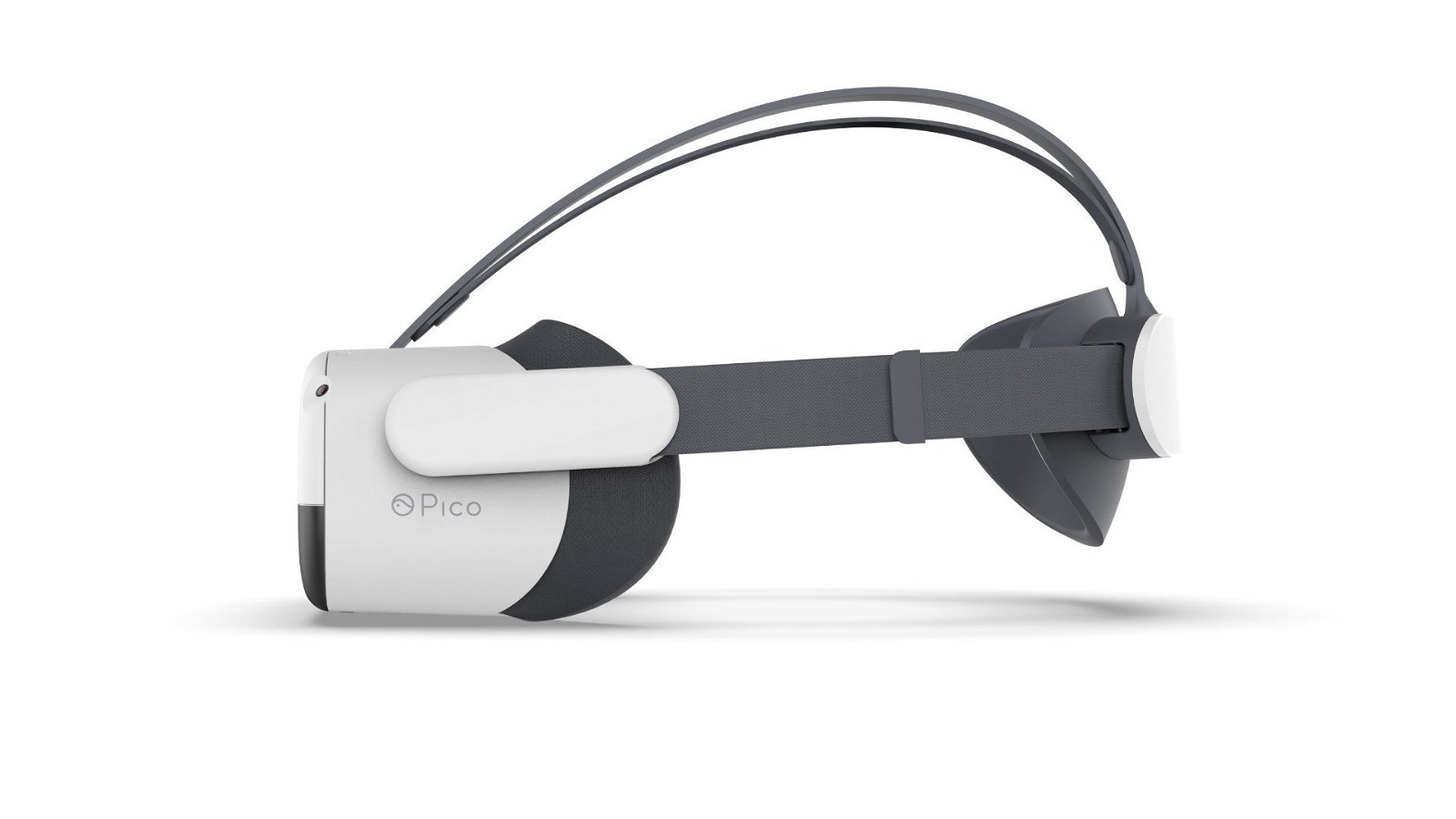Enterprise VR company Pico Interactive has shared its first glimpse at their next generation Neo 3 headset, adding a few new changes to their standalone series with haptic controllers and focus on streaming.

The company circulated its first image of the Pico Neo 3 this week, complete with a new two-tone design along the headset. Like its previous iterations, the next VR headset uses external tracking cameras for 6DoF (six degrees of freedom) and lets users walk around their spaces without sensors or cables. Unlike the Pico Neo 2, the next model adds two additional cameras on the top corners. This lets the Pico Neo 3 track ceilings and walls for improved user tracking. The headset will also feature a slimmer design, suggesting users will have a lighter headset to maneuver with in longer sessions.
But its controller sees a radical upgrade over the Pico Neo 2, which resembled Wii Nunchucks. The newer ones take a few notes from the Oculus Quest and pack a tracking ring on the top for better haptic response. Its grip buttons are also embedded along the ergonomic design, while users can not properly rest their thumbs on the face buttons.
Details on the hardware specs are still to be announced by Pico. According to VRFocus, the Neo 3 will add a few more entertainment features on top of its use for enterprise. Besides using the headset for special VR manufacturing and CAD design applications, it will include upgraded WiFi 6. This makes the Pico Neo 3 more than capable of streaming – something the company claimed will be applied for immersive content. Its display will also be upgraded to render up to 90Hz (and framed per second) for smoother experiences. The WiFi 6 chip will come from an upgraded Snapdragon XR2 CPU, which was also used by Oculus to improve their Quest 2 headset.
The Neo 3 features more content for multimedia, but users should expect the headset to be short on standalone games. Without the Oculus integration, users will still be able to use the headset as a PCVR unit. Previous reviews with the enterprise headset showed it running SteamVR wirelessly from its Wi-Fi Streaming feature. This makes the Neo 3 more than upgraded enough to run Half-Life Alyx and third party titles released on Steam and HTC Vive platforms.
No release date has been announced for the Pico Neo 3, while it will be made available outside of North American markets.




